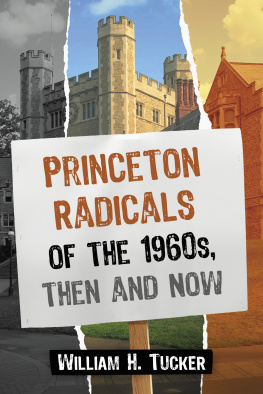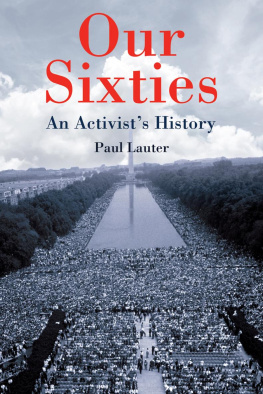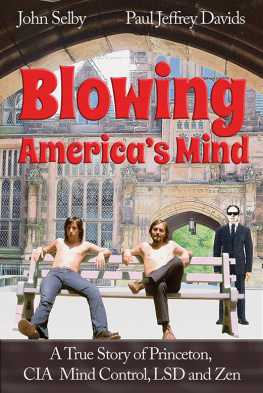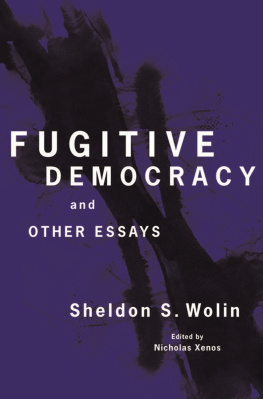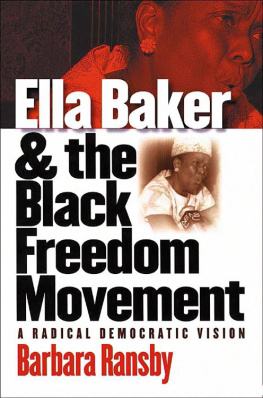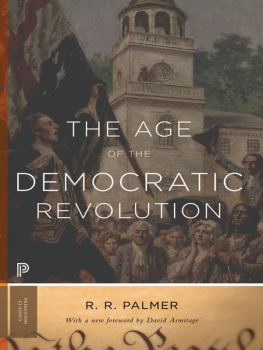
Princeton Radicals of the 1960s, Then and Now
William H. Tucker

McFarland & Company, Inc., Publishers
Jefferson, North Carolina
LIBRARY OF CONGRESS CATALOGUING DATA ARE AVAILABLE
BRITISH LIBRARY CATALOGUING DATA ARE AVAILABLE
e-ISBN: 978-1-4766-2291-0
2015 William H. Tucker. All rights reserved
No part of this book may be reproduced or transmitted in any form or by any means, electronic or mechanical, including photocopying or recording, or by any information storage and retrieval system, without permission in writing from the publisher.
Front cover: Blair and Buyers Hall on the campus of Princeton University (Photograph by David Goehring)
McFarland & Company, Inc., Publishers
Box 611, Jefferson, North Carolina 28640
www.mcfarlandpub.com
For all those who opposed the Vietnam War,
both in and out of uniform
Acknowledgments
I am deeply indebted to the nine people who shared with me their reflections and their life stories; obviously this book would not have been possible without their assistance. For helpful discussions about SDS at Princeton, I am also grateful to Ron Butler, David Lenson, and Paula Bassoff.
My profound thanks to the following people who read earlier drafts of portions of this manuscript and made suggestions that improved the final version immeasurably: Ellen Chances, Seth Friedlander, Steve Freidus, Rosemarie LoPresti, Priscilla Read, David Schankler, and the person who used to be Robby Nerenberg. While the book has benefited from their comments, naturally they bear no responsibility for the opinion and analysis, which are mine alone.
As always, my greatest debt is to Monica for keen reading, astute judgment, constant encouragement, and love.
Introduction:
Latter Day Images
Upon being told of his sons leftist activities, French prime minister Georges Clemenceau remarked that if a man were not a socialist at age 20, then he had no heart, but if he were still a socialist at age 30, then he had no brain. Almost five decades ago masses of college students in the United States demonstrated that, according to Clemenceaus standard, they had heart in abundance, taking to the streets by the hundreds of thousands in a movement for social justice and an end to an imperialist war, and thereby provoking the most dramatic conflict between large portions of the population and its own government since the Blue and the Gray shed each others blood.
Although the students who once occupied buildings to express their displeasure with the established order are now grandparents heading into retirement, the tumultuous era of their youth has continued to play a divisive role in public discourse. In the 2008 presidential election, Barack Obama was accused of palling around with terrorists for his marginal association with Bill Ayers, the former radical now recognized as a national authority on early childhood education. Indeed, it is not only in the United States that the battles of the 1960s are being refought decades later; in the French election of 2008 the eventual winner, Nicholas Sarkozy, devoted what the New York Times called one of his fiercest campaign speeches to an attack on the 1968 movement and its contemporary heirs for having caused a continuing crisis of morality, authority, work and national identity. At the end of his account of the 1968 Democratic national conventionduring which members of the Chicago constabulary waded into a crowd of anti-war demonstrators, swinging their nightsticks indiscriminately in what an investigative commission characterized as a police riotNorman Mailer predicted that we will be fighting for 40 years, a comment that now appears to have been an underestimate. As a Faulkner character remarked, The past is never dead. Its not even past.
However, this continuing focus on the battles of the 1960s has diverted attention from the more interesting question, the one at the root of the second half of Clemenceaus observation: whether rational people would naturally become more conservative with age. This book is composed of two parts. Part I describes the context that produced radical activists and the campaigns that evolved from that context at one Ivy League institution. Part II traces the subsequent lives of nine of the students who led those campaigns to see what effect their involvement has actually had on their subsequent political opinions and careers.
Participants in the radical movement at the time were certain that they had experienced a life-changing transformation, one that would forever inform their values and the way they saw the world. Reflecting on the movement in 1973, Elinor Langer, who went on to become a well-known journalist, predicted that whatever we become individually we will be radicals to our graves if for no other reason than that we will never want in. We started out in and didnt like it. And Charles A. Reichthe Yale law professor, whose trendy 1970 book, The Greening of America, coined the term Consciousness III for a new sense of values that rejected commercialism, materialism, and competition in favor of an emphasis on relationships, the environment, personal liberation, and communityconfidently explained that this new consciousness was a deliberate choice, one that, once made, was not reversible. Once a person reaches Consciousness III, there is no returning to a lower consciousness.
The latter day images of 1960s radicals have not exactly confirmed this certainty that the commitment to their youthful idealism would endure; indeed, the most common portrayals of aging activists have suggested quite the opposite: the abandonment of their principles. One frequent stereotype suggests that, in Todd Gitlins memorable phrase, former radicals have gone from Jaccuse to Jacuzzi, becoming liberal materialists whose former devotion to collectivist principles has not precluded personal financial success, enabling them to enjoy an effete and elitist lifestyle, foreign to mainstream Americans; apparently Consciousness III has been no match for the bourgeois comforts of life, after all. This meme was best encapsulated in the political attack ad sponsored by the conservative Club for Growth in opposition to Howard Dean during his campaign for the 2004 Democratic presidential nomination. Asked their opinion of his tax policy, an elderly rural couple respondsthe man providing the first half of the denunciation, his wife chiming in with the remainder without missing a beatthat Dean should take his tax-hiking, government-expanding, latte-drinking, sushi-eating, Volvo-driving, New-York-Times-reading, body-piercing, Hollywood-loving, left wing freak show back to Vermont, where it belongs. Though the ad made no mention of former activists, it was unmistakably an updated version of the campaign against George McGovern, the 1972 Democratic presidential nominee, labeled by Republicans as the candidate of the three As: acid, amnesty, and abortion. In either case the strategy was to define the candidate as the choice of an alien group far outside the cultural mainstream, but in addition the characterization of the Dean supporters as a freak show was code for 1960s hippies, for whom freak was used as a synonym. The fact that Dean was the governor of Vermont, a state once known as a hippie haven and now home to Bernie Sanders, the only declared socialist in the Congress, provided even more reason for viewers to link the Dean campaign to the earlier radical movement. It was not for naught that Vermonts largest city was often referred to as the Peoples Republic of Burlington.
Next page
